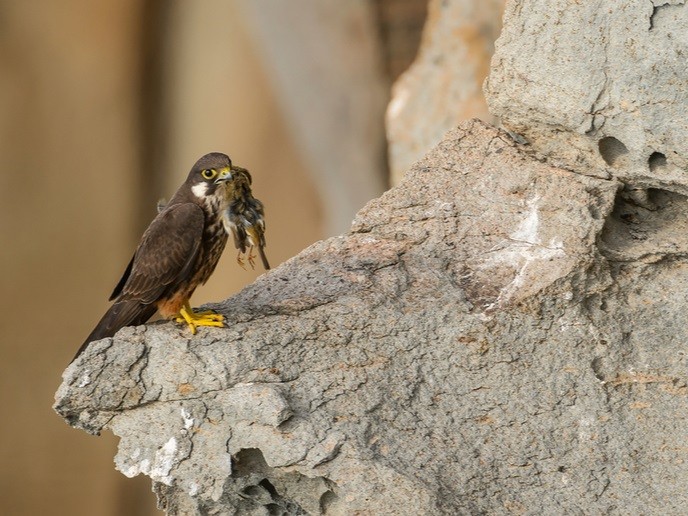How climate change impacts predator populations
It is important to understand how plant and animal populations cope with climate change and what abilities they have to persist as global temperatures rise and environmental changes occur. Scientists now know that environmental changes can coincide with evolutionary changes in animals affected by climate change, but little is known about the role of environmental changes in genetic traits. The EU-funded EcoEvoClim study set out to study the role of genetic variation and plasticity in the evolutionary response of predators. The research, led byLaura Gangoso, used Eleonora’s falcon (Falco eleonorae) colonies in the Canary Islands of Spain as a model system to look at changes in their colours associated with behavioural traits.
Wide-ranging impacts
Climate change has caused these migratory birds to change their breeding habits, with those breeding in Europe and wintering south of the Sahara have advanced, while those wintering north of the Sahara have been delayed. “The Canarian population of Eleonora’s falcons may be considered as a sentinel of environmental processes that occur at large spatial scales,” Gangoso says. The researchers investigated the role of genetic variation, through the different coloured plumage, and plasticity (the bird’s ability to adjust breeding and hunting efforts). They quantified how climate change affects the link between peak food abundance and the timing of breeding in this specialist predator. Gangoso and her team unravelled the mechanism by which Atlantic trade winds determine the viability of the Eleonora’s falcon population from the Canary Islands. “This study represents a nice example of the need to apply multidisciplinary methods to answer complex questions,” notes Dr Gangoso. They used field observations, GPS tracking of falcons, radar monitoring and simulation modelling of prey to integrate the impact of regional winds.
Monitoring and modelling to reduce uncertainty
The EcoEvoClim team developed a model that explains 90 % of the variation in annual productivity of falcons over a decade, providing a reliable predictive tool of population fitness. The study serves as a proof of concept linking climate conditions and animal populations through long-term field monitoring, sophisticated observation tools and mechanistic models. Unfortunately, there is still some uncertainty about how climate change will continue to affect this population of falcons in the future. “Although the future is uncertain, having a powerful, predictive model of population fitness will be the basis for accurate forecasting when reliable climatic models become available,” reports Gangoso. In assessing the role of genetic variation in the ability of populations to plastically respond to climate change, EcoEvoClim researchers analysed long-term data (2007-2017) on the falcons’ breeding performance with regard to genetic plumage colouration. They found that differences in the breeding tactics between males could be explained by cannibalism, especially when food supply is low. “This suggests that mating patterns may interact with other factors and give rise to the observed higher breeding output of dark males only under certain environmental conditions,” explains Gangoso. The project researchers are still analysing the eco-evolutionary response of predator populations to phenological (life cycle) mismatch due to climate change. “The project is a long-term project that I hope will be able to be maintained in the future,” she says.
Keywords
EcoEvoClim, climate change, Eleonora’s falcon, predator population, genetic variation, plasticity, evolutionary response, population fitness



